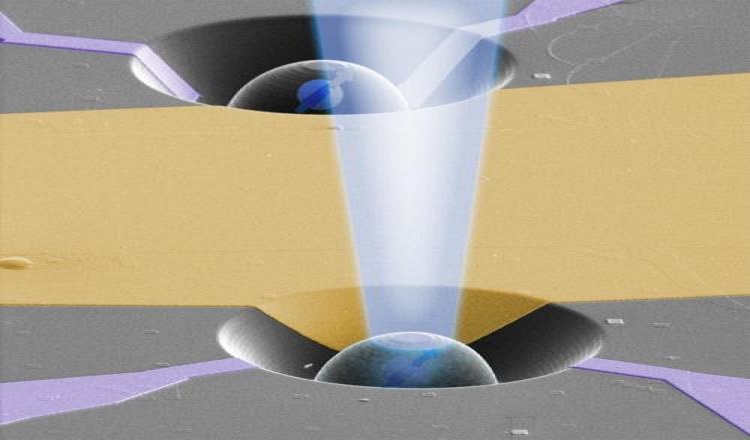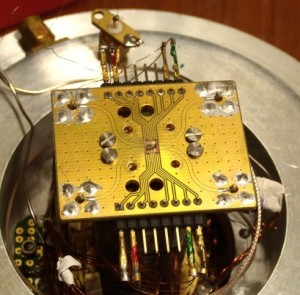
Physicists at Delft University, Netherlands have teleported information. The teleportation took place over a distance of three meters (10 feet), and used a procedure called quantum entanglement. The team achieved this teleportation with 100 percent reliability and without altering the pieces of matter. Teleportation of this nature has never been accomplished before outside of fiction.
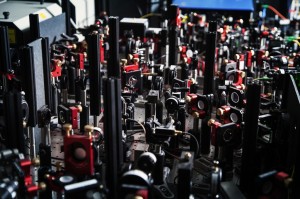
The Delft team transported the information contained in one qubit to another qubit three meters away. The team accomplished this by trapping electrons in diamonds at very low temperatures, set upon and wired to microchip pedestals and surrounded by a forest of optical elements. The team then shot lasers–which were guided through the optical elements–at the diamonds to create cubits within the diamonds. The cold diamonds served as prisons for the qubits. The researchers then caused a spin state in one qubit, and recorded a correlating alteration of the spin state in the qubits contained in the second diamond. The team recorded the spin states by placing low-temperature microscopes near the diamonds.
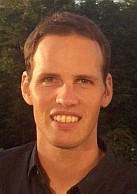
“We use diamonds because ‘mini prisons’ for electrons are formed in this material whenever a nitrogen atom is located in the position of one of the carbon atoms,” said lead researcher for the project Ronald Hanson. “The fact that we’re able to view these miniature prisons individually makes it possible for us to study and verify an individual electron and even a single atomic nucleus. We’re able to set the spin [rotational direction] of these particles in a predetermined state, verify this spin and subsequently read out the data. We do all this in a material that can be used to make chips out of. This is important as many believe that only chip-based systems can be scaled up to a practical technology.”
Phrased according to the report, the team “prepar[ed] the teleporter through photon-mediated heralded entanglement between two distant electron spins and subsequently encode[d] the source qubit in a single nuclear spin.”
The report, “Unconditional quantum teleportation between distant solid-state qubits,” was completed by Delft’s Kavli Institute of Nanoscience’s W. Pfaff, B. Hensen, H. Bernien, S. B. van Dam, M. S. Blok, T. H. Taminiau, M. J. Tiggelman, R. N., Schouten, M. Markham, D. J. Twitchen, R. Hanson, and was published in Science Magazine.
Teleportation in fiction usually refers to a means of moving an object from one location to another without having to travel through the intervening space. Such teleportation is considered impossible according to the laws of physics In the Delft University report, an object is not transported, but a piece of information is. The Delft team transported the state of one electron to another without traversing the intermediate space–teleportation.
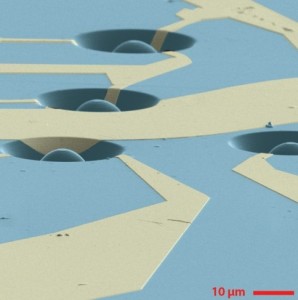
A qubit is a mechanical system, not a material. A qubit is composed of two states. For example, a photon–a single piece of light, is not a qubit–it is a particle of energy–but the process of polarizing a photon–making it rotate–is a qubit.
What is meant by quantum teleportation of a qubit is a process whereby the information of the qubit–its exact state –is transmitted from one to another qubit. How the information is transmitted through space is known as quantum entanglement.
Quantum entanglement is a phenomenon in which the quantum state of two particles cannot be described independently–instead, the quantum state refers to the system as a whole. Any changes to one qubit create corresponding changes in the other qubit.
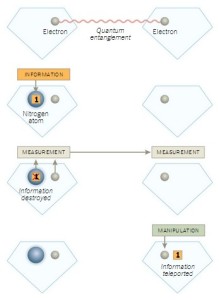 Entanglement works to transport information, physicists believe, because of an unexplained interconnectedness between two particles. Distance is irrelevant, even across light-years.
Entanglement works to transport information, physicists believe, because of an unexplained interconnectedness between two particles. Distance is irrelevant, even across light-years.
“Entanglement is arguably the strangest and most intriguing consequence of the laws of quantum mechanics,” stated Hanson. “When two particles become entangled, their identities merge: their collective state is precisely determined but the individual identity of each of the particles has disappeared.”
The science of quantum information has faced the challenge of transferring quantum information between locations. Prior to the Delft study, an enormous error rate burdened this field of science in attempts to use entanglement to teleport information.
“The unique thing about our method is that the teleportation is guaranteed to work 100%. The information will always reach its destination, so to speak. And, moreover, the method also has the potential of being 100% accurate,” said Hanson.
Next for the Delft team is to extend the distance of teleportation. The team aims to shoot for 1,300 meters (4265 feet). The team plans to undertake this next phase this summer.
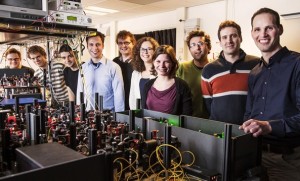
The upcoming test, if successful, could provide evidence that would prove entanglement, and thereby disprove the rejection of the notion by Albert Einstein. There is a race in the community to be the first to prove entanglement through the “loophole-free Bell test,” considered one of the highest goals within quantum mechanics.
Implications of the research include the possibility for the development of the first true quantum computers, which are different from traditional transistor-based computers in that qubit-based computers are not confined to the 0 or 1 binary computation method, but are capable of superpositions of states–that is, quantum computers can simultaneously describe multiple values. The hope of quantum computers is that they will be vastly faster and make completely secure communications possible.
A video produced by the Delft team on teleportation:
Images: Hanson lab@TUDelft
